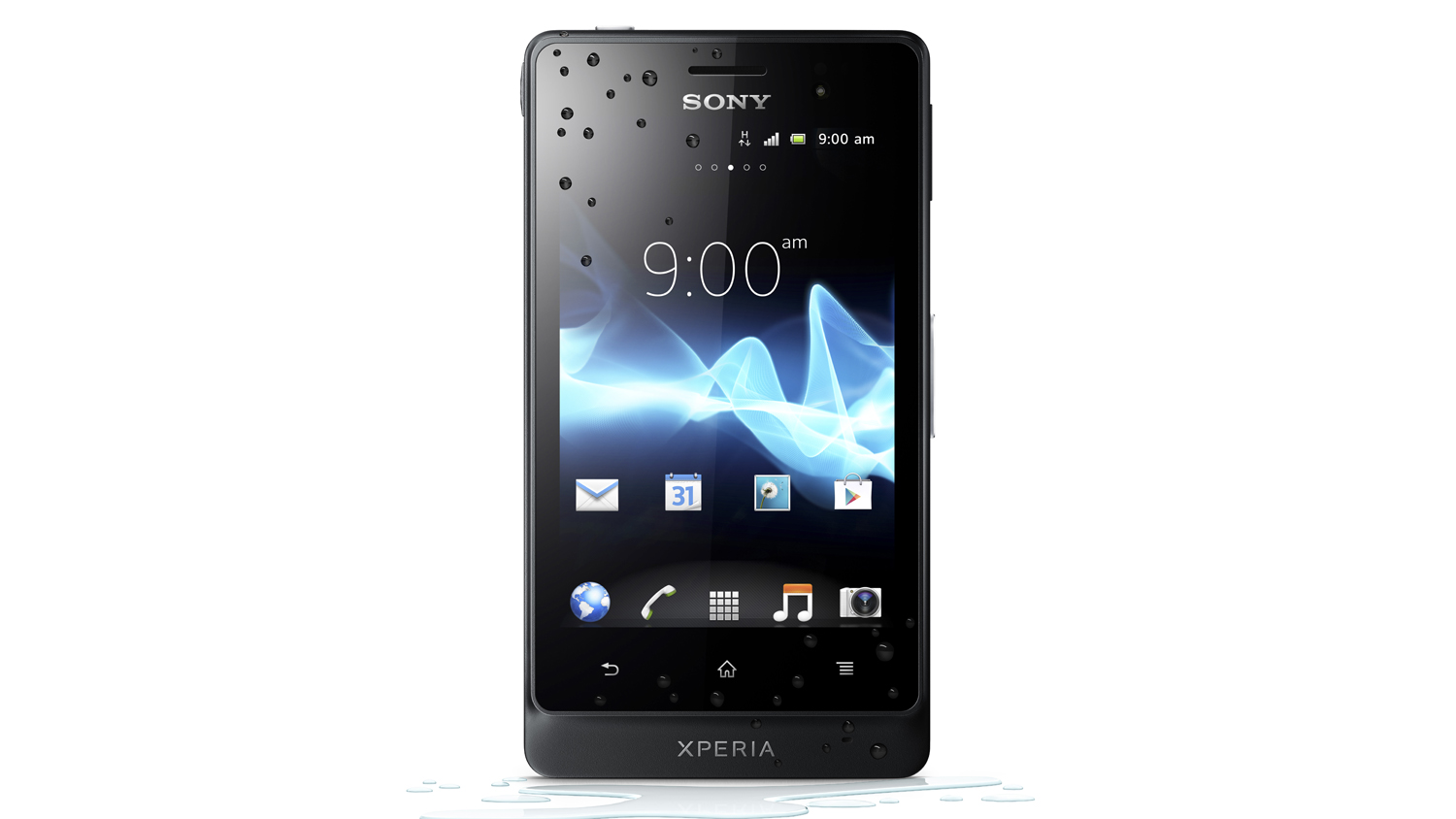TechRadar Verdict
It's not going to set the world alight, but for anyone looking for a phone that is both beautiful and able to stand up to whatever you throw at it, there is no better option than the Xperia Go.
Pros
- +
Stunning design
- +
Rugged IP67 certification
- +
Largely impressive camera
- +
Speedy, easy internet
- +
Broad media capabilities
Cons
- -
No physical camera button
- -
No auto spacing in gesture control
- -
Speaker placement
- -
Slight lag
- -
Stiff connection covers
Why you can trust TechRadar
Sony's first rugged handset since ditching Ericsson as its mobile phone partner, the Sony Xperia Go has taken a number of design hints from its fellow Android-filled, Xperia-branded siblings, lining up with an appealing aesthetic that detracts from the hard-wearing rugged nature of the svelte smartphone.
Despite being IP67 certified - meaning it is dust-proof and can be submerged up to 1m underwater for as long as 30 minutes without damage, the Sony Xperia Go is a slim, compact phone that lines up at a minimalist 9.8mm thick and 110g in weight, just 0.5mm thicker than the smartphone-defining Apple iPhone 4S and considerably lighter than a number of its similarly priced lower mid-market rivals such as the Samsung Galaxy Ace 2.
Bucking the trend of increasingly oversized devices, the Sony Xperia Go features a traditional 3.5-inch touchscreen, with the 320 x 480p resolution, 165ppi, LED-backlit LCD display lining up identical in size to the screen found on the iPhone 4S, albeit with a considerably reduced image quality.
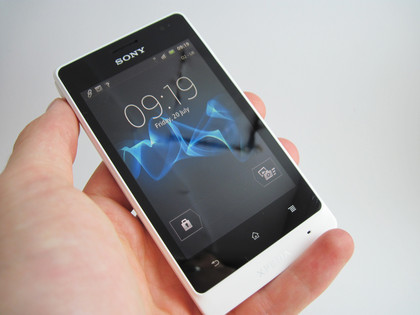
This said, given the handset's mid-range positioning, the multi-touch display offers largely impressive visuals, while proving responsive to the touch.
Eclipsing the specs of a number of its dedicated rugged handset rivals, such as the collection of Motorola Defy-branded phones (the Motorola Defy Mini being the most recent), the Sony Xperia Go's features list is more akin to rivalling a number of more illustrious and notable mid-range devices.
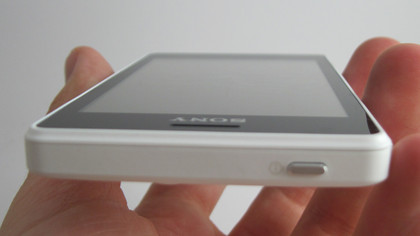
With a 1GHz dual-core NovaThor processor running the show, the Sony Xperia Go is by no means a sluggish device, zipping along quite nicely and largely ensuring applications are opened, run and closed relatively quickly.
On top of the handset's multi-core CPU, the Sony Xperia Go plays host to the sector standard 512MB of RAM as well as 8GB of internal storage. Although this 8GB of storage seems at first impressive, in reality, just half of this is available to the user meaning the available microSD card expansion, up to 32GB, once again becomes a necessity.
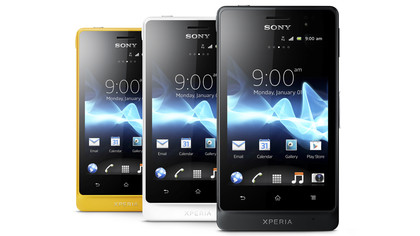
Omitting the now year-old Android 4.0 Ice Cream Sandwich operating system in favour of the positively dated, albeit largely used, Android 2.3 Gingerbread offering, the Sony Xperia Go partners a strong, thoroughly tested OS with an intuitive UI for what is a pleasant, if some what uninspiring software collection, that will have you achieving all your personal needs with little fuss or fanfare.
As with most modern smartphones, Sony with the Xperia Go has partnered a strong collection of functional features with a selection of specs that are tilted far more towards the entertainment medium. A 5-megapixel rear-mounted camera lines up alongside an integrated LED flash and autofocus features.
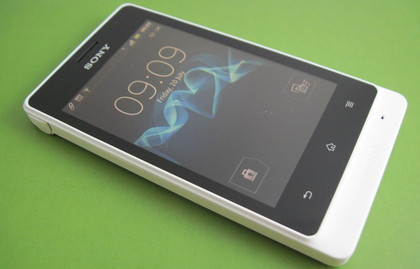
Although there is no secondary forward-facing snapper, Sony has expanded the possibilities of its rear-mounted camera, adding 30 frames per second 720p HD video recording capabilities.
Making the Sony Xperia Go's impressive, although far from ground-breaking array of innards all the more appealing, the handset sports a reasonably wallet-friendly £229 (around $350) SIM-free price tag.
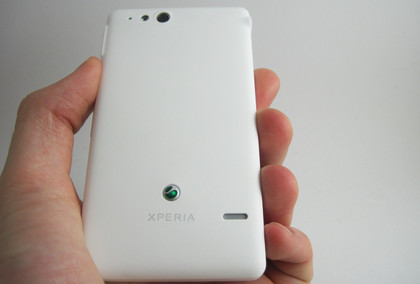
This price sees the phone line up considerably cheaper than the less resilient, marginally higher specced Sony Xperia P sibling and just £30 more expensive than the similarly specced Samsung Galaxy Ace 2 rival - a device that would suffer far more severe consequences if dunked under water.
For what is self-proclaimed as a 'rugged' handset, the Sony Xperia Go is far from the standard mould, with the usual oversized, rubberised form making way for a svelte, smooth plastic finish that gladly bucks the trend of thick, clunky, unappealing devices in favour of a minimalistic, aesthetically pleasing form that is more appealing to the eye than many of its rivals that lack the same IP67 rating.
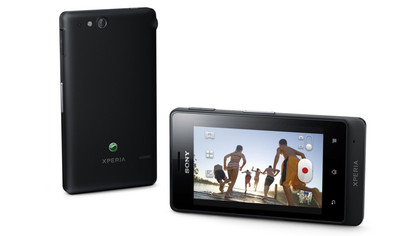
Although remaining a mobile phone that you can throw around with little concern of damage, the Sony Xperia Go is not the sort of rugged classic that is more attuned to being whipped out at a building site as opposed to a bar, with an extremely stylish, aesthetically pleasing finish that features a super-slim 9.8mm thick form factor that defies the phone's rugged nature.
Despite being a largely plastic affair, the Sony Xperia Go, which features a polycarbonate back, is strong and sturdy in the hand, with the 110g design proving comfortable without being unnervingly light, while also producing no unwanted flex, bending or worrying creeks when put under large amounts of pressure.
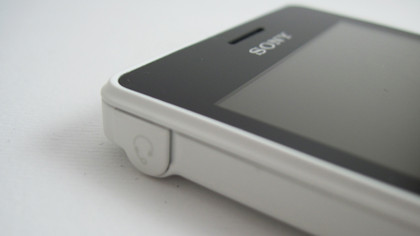
With the usual collection of three touch-sensitive Android controls at the base of the phone offering the essential home, back and option access, the Sony Xperia Go hosts just three physical buttons - the top-mounted sleep turn power button and the right-mounted up and down volume controls.
Although the volume controls are placed in a position prone to accidental presses when holding the device in a conventional left-handed manner, the physical buttons have enough resistance to not be of concern.
What is slightly more troubling, however, is the compact sleep button that can prove unnecessarily fiddly to access and use.
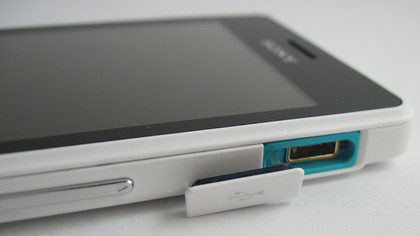
With a scratch-resistant screen coating further aiding the Sony Xperia Go's rugged nature, the latest Xperia handset ensures against water damage by fitting the handset with independent micro USB and 3.5mm audio jack connection covers.
Although successfully keeping the device's components dry (we had no issue after dunking the Sony Xperia Go), these seals are extremely stiff and awkward to open at first, with a number of uses giving the feeling that the fittings would wear down with time, hindering the handset's waterproof abilities.
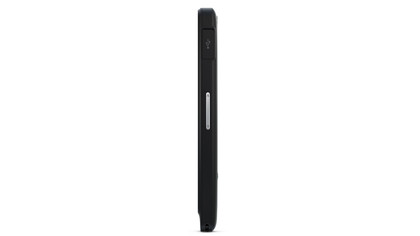
With an all-encompassing rear panel that offers little grip in the hand and can be troublesome to return to place once removed to access the microSD and SIM card, the Sony Xperia Go's biggest design downfall is in the selection of handset colours on offer.
While the black unit is attractive and functional and the yellow model offers something different on a largely stoic smartphone scene, the white Sony Xperia Go is an option that stands out for all the wrong reasons.
Although visually impressive when removed from the box, for a handset that is supposed to live up to all that life can throw at it, the white Sony Xperia Go shows sign of wear, tear and general day-to-day grotty use all too quickly.
